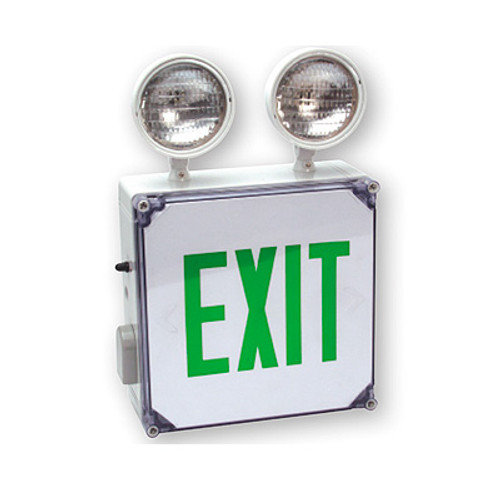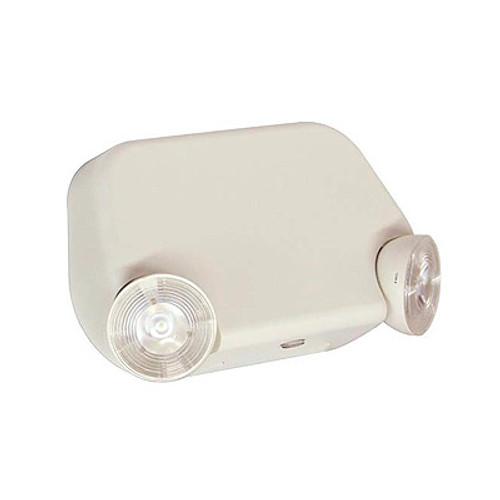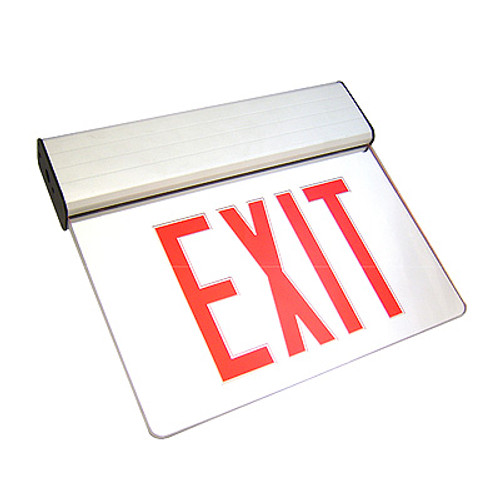Exit Emergency
In the realm of building safety and compliance, emergency exit lights serve as a crucial component in guiding occupants safely out of premises during emergencies. These illuminated signs are not just a matter of legal requirement but a critical aspect of safety protocols in various settings, including schools, hospitals, office buildings, and more. This article delves into the significance of emergency exit lights, the safety they provide, the compliance requirements across different jurisdictions such as California, Chicago, and New York, and the types and mounting styles of emergency exit lights used across various industries.
The Safety of Emergency Exit Lights
Emergency exit lights are designed to operate during power outages, ensuring that exit pathways and exits are clearly visible and accessible at all times. This visibility is crucial in emergencies, such as fires or earthquakes, where power supply disruptions are common. The presence of well-lit exit signs significantly reduces panic and confusion, guiding occupants to safety efficiently and reducing the risk of injuries.
Compliance Requirements Across Jurisdictions
Compliance with local and federal regulations is paramount when installing emergency exit lights. These regulations ensure that emergency lighting systems are adequate, functional, and well-maintained, ready to operate in an emergency.
Compliance Requirements Across Jurisdictions
Compliance with local and federal regulations is paramount when installing emergency exit lights. These regulations ensure that emergency lighting systems are adequate, functional, and well-maintained, ready to operate in an emergency.
California: Adheres to Title 24, part 6 of the Building Standards Code, which emphasizes energy efficiency alongside safety. It requires that emergency exit lights be visible and legible from a distance, with specific brightness and contrast ratios.
Chicago: The Chicago Building Code specifies requirements for emergency exit lights to be durable, tamper-proof, and capable of operating in extreme conditions, ensuring functionality during critical times.
New York: Adopts the standards set by the National Fire Protection Association (NFPA) 101, Life Safety Code, but also incorporates additional local amendments, including the use of photoluminescent exit path markings in high-rise buildings.
Types of Emergency Exit Lights
Emergency exit lights come in various forms to suit different environments and preferences:
Exit Sign: A standard illuminated sign indicating the exit, often combined with directional arrows.
Emergency Light: Separate from the exit sign, these lights illuminate the path to exits, ensuring that corridors, stairwells, and obstacles are visible.
Backlit Exit Sign: These signs provide uniform illumination across the sign face, making them easily readable from a distance and in smoky conditions.
Exit Sign Emergency Light Combo: A combination unit that includes both the exit sign and additional lighting to illuminate the path, providing a comprehensive emergency lighting solution.
Mounting Styles of Emergency Exit Lights
The effectiveness of an emergency exit light is significantly influenced by its mounting style, which must be chosen based on the layout and specific needs of the facility:
Ceiling Mount: Ideal for large open areas and corridors, providing visibility from a distance in all directions.
Wall Mount: Commonly used in smaller spaces or above doors, these are directly visible along the path of egress.
Recessed Mount: For a more discreet appearance, used in environments where aesthetics are considered alongside functionality.
Locations of Emergency Exit Lights
Emergency exit lights are a common sight in a wide range of locations, each with its unique requirements:
Educational Institutions: Schools and universities install emergency exit lights to ensure the safety of students and staff during evacuations.
Medical Facilities: Hospitals and clinics, with their complex layouts, rely on clear exit signage to guide staff and patients to safety efficiently.
Governmental Buildings: Compliance with safety standards is paramount in public buildings, where emergency exit lights must be visible and functional at all times.
Commercial and Industrial Spaces: From office buildings to factories, ensuring the safety of employees and visitors through adequate emergency lighting is a critical concern.
Residential Buildings: High-rise residential complexes also require emergency exit lights in common areas and stairwells to facilitate safe evacuation.
Industries That Use Emergency Exit Lights
Virtually every industry recognizes the importance of emergency exit lights in maintaining safety standards:
Educational: Ensuring that students and educators can evacuate buildings safely in an emergency is a priority.
Medical: In hospitals, where evacuations must be carried out with special care, clear exit signage is crucial.
Governmental: Public safety in government facilities is enhanced through the proper use of emergency exit lights.
Commercial: Retail establishments, office buildings, and businesses must safeguard occupants with visible exit paths.
Industrial: Factories and warehouses with complex layouts and potentially hazardous materials rely on emergency exit lights for safe evacuations.
Residential: Apartment buildings and residential complexes use emergency exit lights to ensure resident safety during power outages or emergencies.
Conclusion
Emergency exit lights are an indispensable part of building safety, offering guidance and reassurance in crisis situations. Compliance with local and federal regulations ensures that these lighting solutions are effective, reliable, and ready to perform when needed most. From the backlit exit sign that stands out in smoky conditions to the emergency light that illuminates the path to safety, these devices are tailored to meet.












